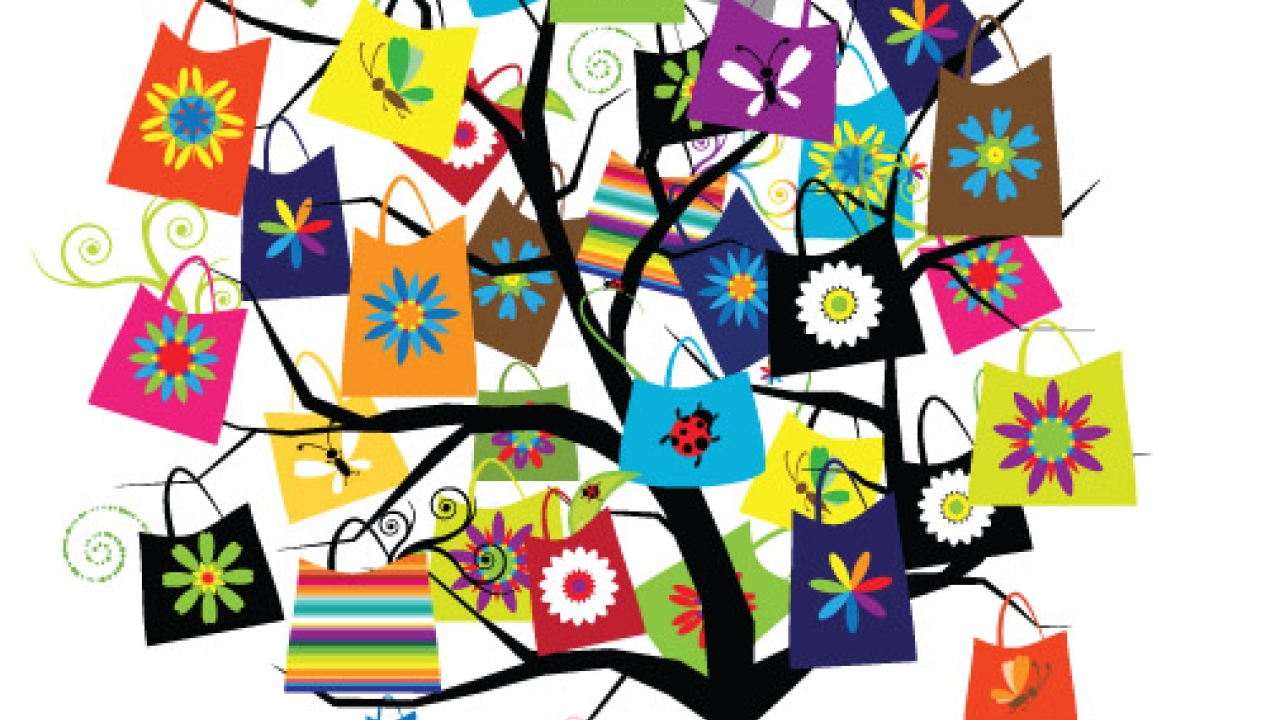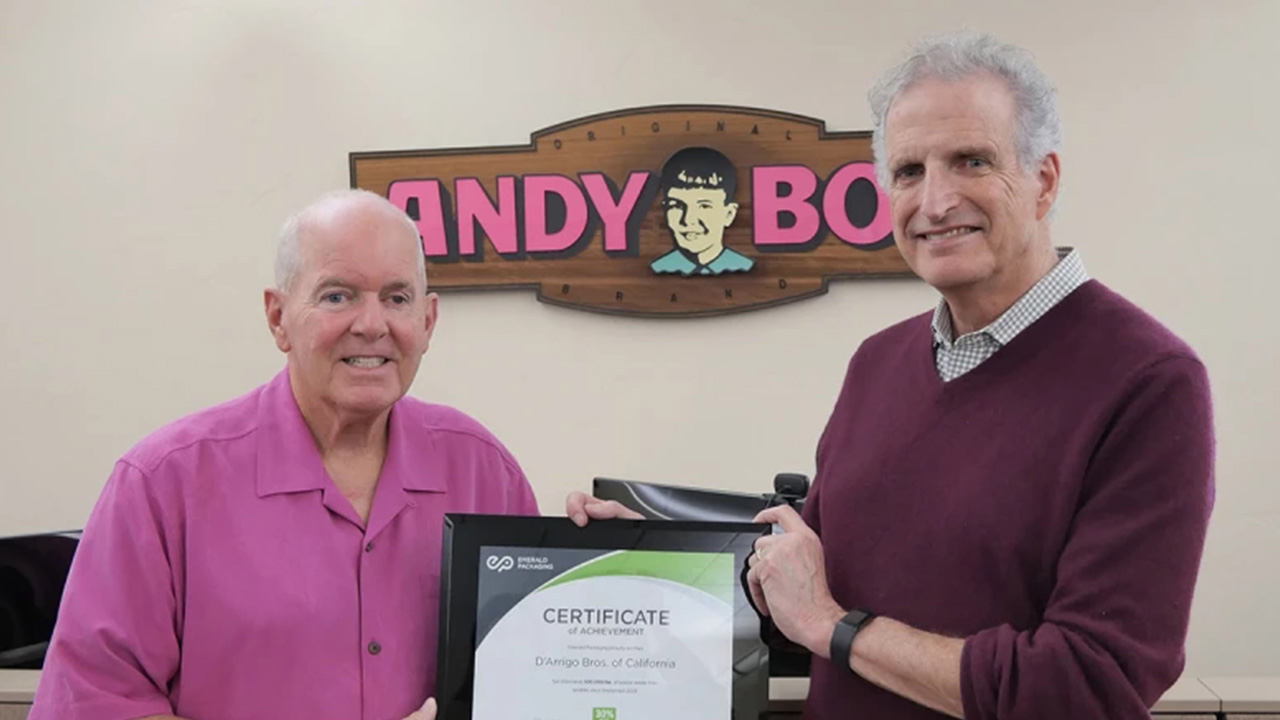Designed for life

Sustainability in packaging design is now being demanded by consumers, governments and global brands. It’s time for the labels industry to take notice, argues Danielle Jerschefske
Increasingly, global consumers are making purchasing decisions based on both health and sustainability factors, and are more empowered than ever in this digital, mobile world to understand these impacts at the ‘first moment of truth’ – at the store shelf.
So we need to empower label and packaging designers with the tools to identify areas for reducing environmental impact, and at the same time open up new avenues for innovation and added value.
Design for Sustainability (D4S) is much more than manufacturing a ‘green’ label or package. It brings value to the product by minimizing its social, economic and environmental impact. Life-cycle analysis (LCA) and supply chain management provide the tools we need.
Life-Cycle Analysis
An LCA study of a product can be broken down into four main aspects: how raw materials are acquired and converted; how the product is manufactured; how it is used/reused; and what happens to it when it becomes waste. Packaging for distribution is included in the production phase.
More specifically, LCA is a technique to assess the environmental aspects and potential impacts associated with a product, process or service by:
• Compiling an inventory of energy and material inputs and environmental releases
• Evaluating their potential environmental impacts
• Interpreting the required actions for decision-makers
Cradle to cradle, or closed loop, design is the only way to achieve a sustainable future. But this will require better assessment of the impact and recovery value of materials, as well as measures to understand, track, manage and reduce greenhouse gas emissions.
If label designers are to understand the life-cycles of the materials and processes they specify, they must rely on industry scientists, engineers and others behind the latest innovations to provide them with real, tested data so that they can make informed decisions in this critical first step of the packaging life-cycle.
This in turn requires multi-disciplinary, global industry collaboration, as seen on the recently established working committees in the industry’s leading trade organizations, TLMI and Finat.
As well as action on the global stage, the environmental profile of a product or process will be heavily affected by the available local recycling and recovery systems – for example, which materials are accepted and how they are ‘re-valued’. A reliable resource for this information in the US is Earth911.com.
Pressure points
Global brands and CPGs are being held increasingly responsible for the environmental footprint of their products, including total carbon output, and are therefore taking the lead in highlighting areas where improvements can be made. According to the Sustainable Packaging Coalition, label material and content indexing has already begun and will be included in databases used to evaluate packaging recovery streams.
The same pressures are being felt at government level. European nations, led by Germany, already have tough recycling regulations. The Brazilian government’s recent National Policy on Solid Waste (Politica Nacional de Residuos Solidos a.k.a PNRS), enacted in August of 2010, has become a pressure point for the local label industry. PNRS places the onus for collection and reuse of waste on the company that produces it, and seeks to achieve success using ‘reverse logistics’ systems, with the waste being returned back through the supply chain.
But perhaps the most comprehensive example of the power of legislation came in Canada, where the government enacted a stewardship tax in 2010, forcing large grocery retailers – including Safeway, Metro and Walmart – to pay for selling packaging which cannot be recycled within the existing infrastructure.
The impact of the legislation was felt immediately. PET thermoform containers were found not to be recyclable because the pressure sensitive label adhesive gums up the recycling process, contaminating the PET flake. The grocery members of the Retail Council of Canada immediately issued a call for a test protocol to demonstrate which label adhesives are recyclable. The Association of Postconsumer Plastic Recyclers in coordination with the National Association for PET Container Resources set up a working group with the producers of PS labels for PET thermoforms to jointly review the effects of adhesives on the recyclability of the container. More information can be found at www.plasticsrecycling.org/pet-thermoforms. The lesson for North America is that the label industry needs to catalyze change and innovation before legislation restricts its creative opportunities.
Carbon Accountability
Out of all the areas of ‘sustainability’, global brands have had the most success in reducing harmful environmental emissions, and on-pack carbon label schemes now allow brands to communicate this success to interested consumers.
The Carbon Reduction Label scheme is administered by the Carbon Trust, a not-for-profit UK-based consultancy which works to educate national governments and consumers about the causes and effects of CO2 emissions. Brands that use the label must calculate the emissions footprint of the product in question with regard to the international PAS 2050 standard. The Carbon Footprint labeling system then communicates to the consumer the total amount of emissions released in bringing a particular product to market.
The system takes into account every stage of the product’s life cycle, including extraction of raw materials, manufacture, packaging, distribution, use-phase and post-use/disposal.
Once the footprint of the individual product has been measured and certified, the brand must set goals to further reduce carbon emissions. Every two years the carbon footprint is re-measured and if there has been no further reduction, the label is withdrawn from the product and its packaging. Walker’s Chips was the first brand to include a Carbon Footprint Label.
In the US market, GNP Company was the first poultry producer to introduce the Carbon Reduction Label on its Just BARE product packaging. Although clearly committed to creating a more sustainable package, the company quickly ran into challenges, since many of the ‘greener’ materials available are not able to provide the durability needed to ensure food safety through the entire production and distribution chain. Still, steps have been made. For example, the company’s Just BARE brand of poultry uses a #1/PET/PETE plastic tray that is accepted by some – though not all – municipal recycling sites, and it recently switched to a linerless pressure sensitive label, thus eliminating the need for a release liner, cutting additional waste from its product’s life-cycle.
Tesco, one of the world’s leading private label retailers, uses the Carbon Label on a variety of its products following a decision in 2007 to work with the Carbon Trust. Today it sells more than 100 products across a wide range of household applications that bear the Carbon Reduction Label. In 2011 the retailer set ambitious goals to reduce the carbon emissions of the products sold in its stores by 30 percent by 2020. At the same time it committed to assist its suppliers in reducing their own carbon footprints by 50 percent over the same period.
The supermarket chain initially made a pledge to label all of its 70,000 product lines, but in January of this year retracted this goal due to the large amount of work and the cost involved in indexing the different life stages of so many products. The label will still be used on currently indexed products.
Smart Sustainable Interaction
Interactive packaging tactics such as QR codes and the SnapTag are helping brands and retailers improve the way they communicate sustainability to consumers – for example by directing a buyer to an informative website or educational game.
Already there are applications that instantly inform consumers of the various life-cycle impacts of a chosen product. For example, The Good Guide smart phone app provides information on the sustainability and health and safety profiles of both products and the companies that manufacture them. The application has a bar code scanning facility to identify the product, which makes the process extremely fast and simple. Overall scores are provided for health, environment and societal factors. Good Guides currently includes rankings for more than 120,000 different products in a number of personal care, household, electronics, toy and food sectors, and is adding more each month.
In 2011, Nestlé introduced its mobile app 123Recycle – for Singapore only at the moment – which through barcode scanning and email follow-up, tells the consumer how to sort and dispose of the various pieces of a product’s packaging. It was developed by the local Nestlé Singapore team and the Nanyang Polytechnic School of Information. The global brand hopes to develop the application for other countries and regions.
Social media avenues will be used more and more to reach and educate consumers on sustainability. Reckitt Benckiser has done a great job of interacting with its customers through
Facebook. Via its poweRBrands game, which is somewhat similar to Facebook’s Farmville, users must use their sales and marketing skills to beat the competition, working their way up to be the company president.
More recently the market saw the introduction of Trash Tycoon by TerraCycle, which is also similar to Farmville. In this interactive game, players earn points for collecting trash in their community and for finding value streams for the materials to be upcycled into new products.
We can expect to see similar initiatives specifically talking to consumers about the carbon footprint of packaging and products, recycling, energy reduction at the in-use phase and general environmental information. As consumers continue to gain perspective and increasingly reward brands that align with their sustainable values, label converters and suppliers must themselves become an active part of the conversation.
Global concerns
With global label consumption increasing at a rapid rate, the issue of environmental footprint will only become more urgent. In developed Western markets, consumption rates of PS labels averages around 14-18 m2 (45-55 sq ft) per person, per year. But developing markets consume only between 0.9 and 3m2 per person, showing the huge growth potential. As the Earth’s population increases by over two billion by 2050, middle class numbers are expected to continue rising, driving stronger global demand for consumer goods and packaging. It is clear that change is inevitable.
This article was published in L&L issue 2, 2012
Stay up to date
Subscribe to the free Label News newsletter and receive the latest content every week. We'll never share your email address.


